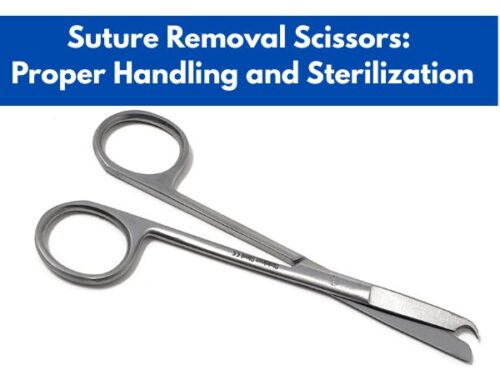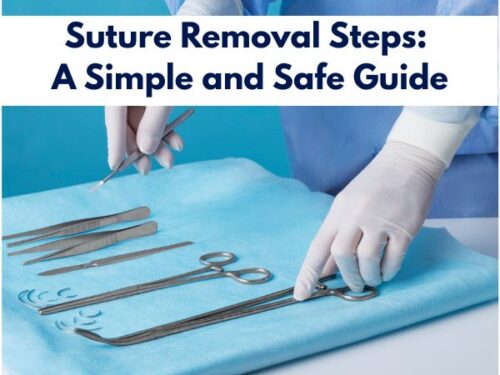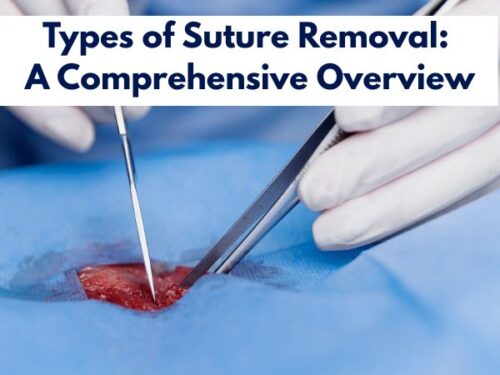What is the difference between sterile, distilled, and de-ionized water?

Water is the universal solvent that is used in the medical field for multiple reasons, particularly for the preparation of intravenous and subcutaneous injectable preparations. For this purpose, the groundwater needs to be further purified by several means to deactivate microbes present in it. Moreover, demineralization of water may also be needed to remove the anionic and cationic species from it. All of this can be achieved by subjecting the groundwater to sterilization, distillation, and de-ionization among other methods.
Sterile water (SWI)
The sterile water, as the name suggests, is water completely free from pyrogens such as bacteria, viruses, fungi, etc. i.e. non-pyrogenic. It is free from microbes thus given the name ‘sterile’. It has a pH of 5.5 and an osmolarity equal to zero.

Preparation of sterilized water
Sterile water is prepared by the process of sterilization which is done to render the water free from bacteria. It can be done by multiple methods including:
- Filtration
- Chlorination
- Ionizing radiations
- Heating/Boiling/Steam sterilization
Applications of sterile water
It finds extensive applications in the preparation of intravenous injectables i.e. drug-containing solutions intended to be given via IV route such as injections, drip systems, etc. Additionally, their intramuscular as well as subcutaneous use is also common. Sterile water is also used in wound irrigation.
Limitations of the sterilization process
The sterile water has the following limitations:
- Sterilized water has no organic impurities remaining in it once the sterilization is completed. However, inorganic materials are still present.
- Additives must be added in sterile water before administration as, due to their hypotonicity, it is a hemolytic agent in their pure form i.e. it has the potential to break down the body’s blood cells.
Distilled water (DW)
Distilled water is the product obtained after the groundwater is subjected to distillation which is a combination of two processes, evaporation, and condensation. The distilled water is safe for drinking purposes but it lacks the necessary mineral content.
Preparation of distilled water (DW)
Distilled water is prepared by the distillation process. In this method, water is heated up to its boiling point i.e. 100°C, the point at which water leaves its impurities behind and evaporates. These vapors are then collected and condensed by a process called condensation to obtain the water in liquid form. This distilled water is free from all organic as well as inorganic impurities.

Laboratory scale distillation apparatus
Applications of distilled water
Distilled water finds extensive applications in sterilizing medical equipment. Moreover, it is also suitable for the preparation of skin care products due to the absence of minerals and other impurities.
Limitations of the distillation process
The distillation process does not ensure the following:
- Distilled water does not necessarily eliminate microorganisms from the water. However, once distilled, the DW must be passed through a sterilization process to ensure the absence of bacteria.
De-ionized water (DI or DIW)
De-ionized water, or as it can be called synonymously demineralized water (DM), is the form of water from which almost all of the minerals have been removed. These mineral ions include cationic entities such as sodium, iron, calcium, and copper along with anionic ions including sulfate and chloride ions.
Preparation of de-ionized water
The method which results in the formation of the de-ionized form of water is called the ion-exchange technique. The groundwater is pumped into the ion exchangers, both cationic and anionic ion exchangers, where the minerals present in water are replaced by hydrogen or hydroxyl ions.

Ion exchangers
Applications of de-ionized water
De-ionized water is a good cleaning agent for medical and laboratory equipment. Furthermore, it can be employed for the cleaning of equipment in pharmaceutical manufacturing plants.

Some uses of de-ionized water
Limitations of the de-ionization process
Although the process of de-ionizing the groundwater is an easy and inexpensive method, it comes with certain limitations:
- The ion exchange method does not necessarily remove microbes such as bacteria and viruses from the supplied groundwater.
- The uncharged particles, as they are not attracted to cationic or anionic resins, are not removed from the water.
Difference between sterile, distilled, and de-ionized water
The sterilization, distillation, and de-ionization are the three discreet methods employed for water purification. Although all the three methods have their own advantages, a distinction can be drawn between them. A comparison between the sterilized, distilled, and de-ionized water has been given below:
| Parameters | Sterilized water (SW) | Distilled water (DW) | De-ionized water (DI) |
| Degree of purification | Pyrogens and microbes are removed | Minerals, ions, and heavily charged impurities | Most non-volatiles including neutral organic compounds and microbes removed |
| Phases involved | No phase change occurs during the process | Water is changed from liquid to vapor phase and then back to the liquid phase | No phase change occurs during the process |
| Added chemicals | No addition of extra chemicals during the process | No addition of extra chemicals during the process | A mixture of water and charged resin |
| Limitations | Does not necessarily remove inorganic impurities | Uncharged/neutral particles, organic compounds, or microbes are not removed | Does not necessarily remove micro-organisms |
Conclusion
Purification of water before its use in pharmaceutical manufacturing is a common practice. As the groundwater is full of minerals, ions, pyrogens, and microorganisms, a need arises of cleaning it thoroughly before use. A multiplicity exists in the methods which can be used to achieve this purpose which include sterilization, distillation, and de-ionization. All three methods, despite being different, transform the groundwater to yield a cleaner and purer form of it with slight differences in the composition of the products. Thus, the suitable technique must be selected according to the specifications intended to be achieved after the process of purification.


















